The thyroid gland is small and consists of two lobes, one on each side of the trachea (windpipe) in the neck. This gland produces the major thyroid hormone called thyroxine (T4) and a small amount of another hormone, triiodothyronine (T3). These hormones regulate the body’s metabolic rate and affect every system in the body. The production of the thyroid hormones is controlled by the hormone called thyroid stimulating hormone (TSH). TSH is produced by the pituitary gland, which is found at the base of the brain.
One or both of these glands can enlarge and overproduce thyroid hormone. An elevation in thyroid hormones increases the metabolic rate of the body which puts stress on the heart, kidneys, nervous system, gastrointestinal tract, liver, as well as all other organs of the body.
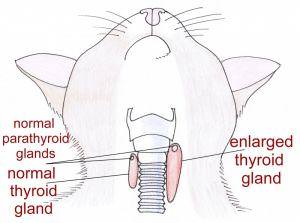
Symptoms of hyperthyroidism in cats can be seen in any breed of feline, male or female, but occurs almost exclusively in middle-aged to older cats with the average age being 13 years. Only about 5% of hyperthyroid cats are younger than 10 years of age.
The incidence of hyperthyroidism in cats has increased markedly over the last 25 years. The reason for this is unknown, but probably due to multiple factors. The ingredients and types of foods fed, immunological factors, and environmental influences may be involved.
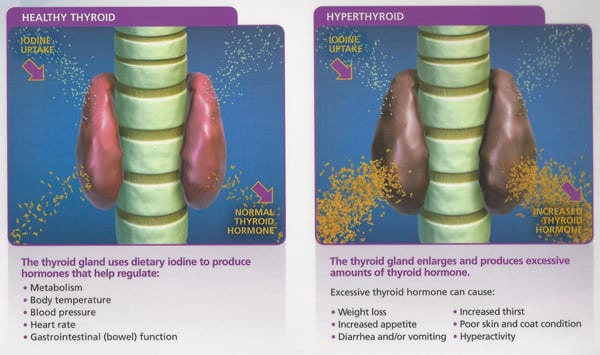
Possible causes of hyperthyroidism include:
Iodine levels in cat food – either too low or too high. Note that this is a very poorly regulated nutrient in cat food with levels varying over a 30-fold range.
PBDEs – PBDEs are fire retardant chemicals that can be found in high concentrations in some fish and also in house dust. Since PBDEs are known to affect thyroid function, and cat foods tend to be high in fish, there may be a causal link between hyperthyroidism and fish consumption.
Soy in cat food – Soy is a known disruptor of thyroid gland function. If you have read my Feeding Your Cat: Know the Basics of Feline Nutrition which outlines what it means to be an obligate carnivore, you will understand that soy has no logical place in cat food. However, soy will increase the profit margin for pet food companies. Therefore, it is present in many cat foods – especially those made by Purina.
According to one study, soy was identified in 60% of all tested cat foods at a level high enough to interfere with thyroid function.
BPA (bisphenol A) – BPA is a known endocrine disrupter that may play a role in the cause of hyperthyroidism. BPA is found in the coating of the inside of some cans of pet food. Generally speaking, the smaller (3 ounces and 5.5 ounces) cans will be less apt to contain BPA than the larger (12-13 ounce) cans.
Symptoms of Hyperthyroidism in Cats

- Weight loss 90% of cats
- Increased appetite 53%
- Vomiting 44%
- Increased water consumption, urination 40%
- Increased activity, behavior changes, nervousness 34%
- A fast heart rate
- A poor hair coat, hair loss
- Diarrhea
- Tremors
- Occasionally weakness, depression
- Occasionally panting, difficulty breathing
Rapid heart rates are common in cats with hyperthyroidism along with heart murmurs and high blood pressure. Cats with hyperthyroidism that are not treated often develop a heart condition called hypertrophic cardiomyopathy, in which the muscle of the heart becomes excessively thick. This can lead to heart failure and death.
Diagnosis
There are three main criteria for diagnosing hyperthyroidism:
- The presence of clinical signs
- An enlarged thyroid gland – Normally, the thyroid gland in cats cannot be palpated; however, in most cats with hyperthyroidism the gland becomes large enough to feel.
- Increased thyroid hormone levels – In the vast majority of cases, a definitive diagnosis of hyperthyroidism is based on a simple blood test that shows elevated T4 levels in the bloodstream. Unfortunately, 2 and 10 percent of all cats with hyperthyroidism can have normal T4 levels. One possible explanation for this is that in mild cases, T4 levels can fluctuate in and out of the normal range. Another is that concurrent illness can suppress elevated T4 levels, lowering them into the normal or high-normal range.
Since many of the symptoms of hyperthyroidism in cats can also be found in other diseases such as diabetes mellitus, inflammatory bowel disease, intestinal cancer, kidney failure, heart disease, or liver disease, other laboratory tests such as a CBC, serum chemistry, and urinalysis are generally performed to determine if these diseases are present.
Occasionally, veterinarians will use other tests to confirm their diagnosis of hyperthyroidism. These include the T3 suppression test, thyrotropin-releasing hormone stimulation test, measurement of free T4, and thyroid radionuclide uptake and imaging.
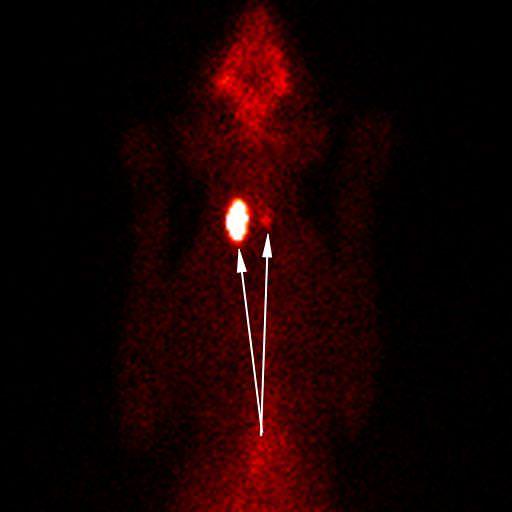
Treatment
There are three types of treatment for hyperthyroidism:
- Life-long oral anti-thyroid medications
- Surgical removal of affected thyroid glands
- reatment with radioactive iodine
All of these treatments have their advantages and disadvantages and some are better than others for different age and disease presentations. Your veterinarian will be able to guide you through the pros and cons of each allowing you to make the best choice for you and your cat.
A new treatment, called “chemical ablation” is being investigated. With this treatment, ultrasound is used to identify the thyroid gland, which is then injected with a chemical or exposed to heat via high radiofrequency to kill the abnormal cells. Although the procedure requires anesthesia, the treatment takes less than 15 minutes.
Iodine deficient prescription diets, unlike the claims, usually made Do Not restore thyroid health. Only radioactive iodine and surgery actually address the underlying cause of the disease, which is a benign or cancerous tumor. Reducing Iodine to affect the thyroid gland also negatively impacts the entire body.
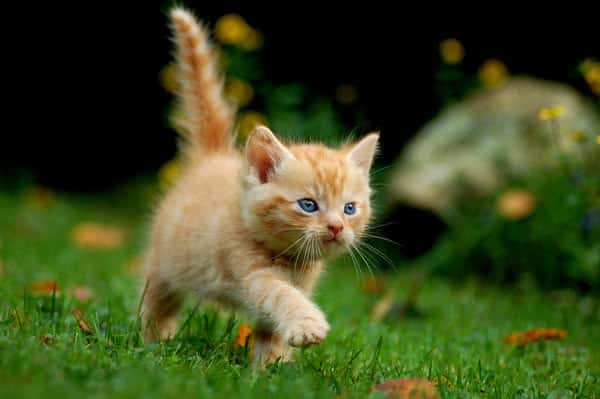
This material is provided for educational purposes only and is not intended to diagnose or treat any disease or condition. All specific treatment decisions must be made by you and your local, attending veterinarian.
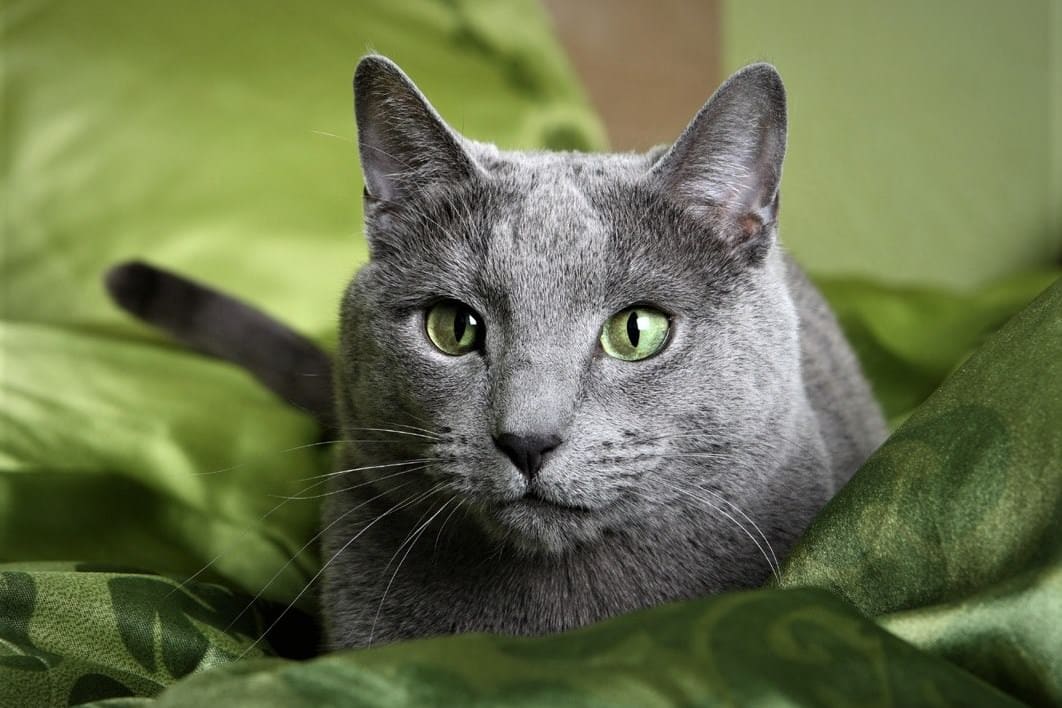
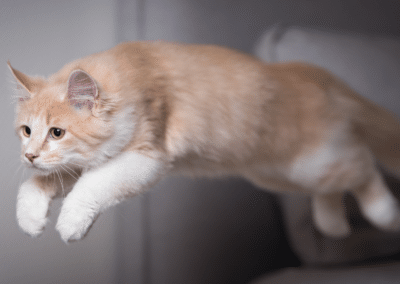


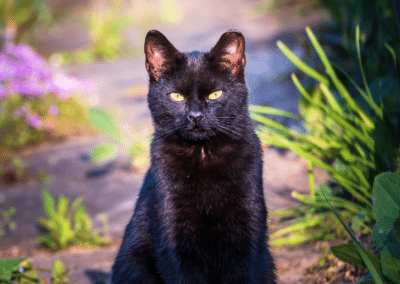
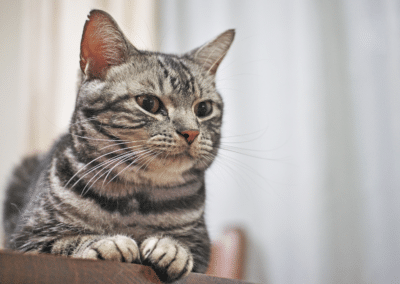


0 Comments